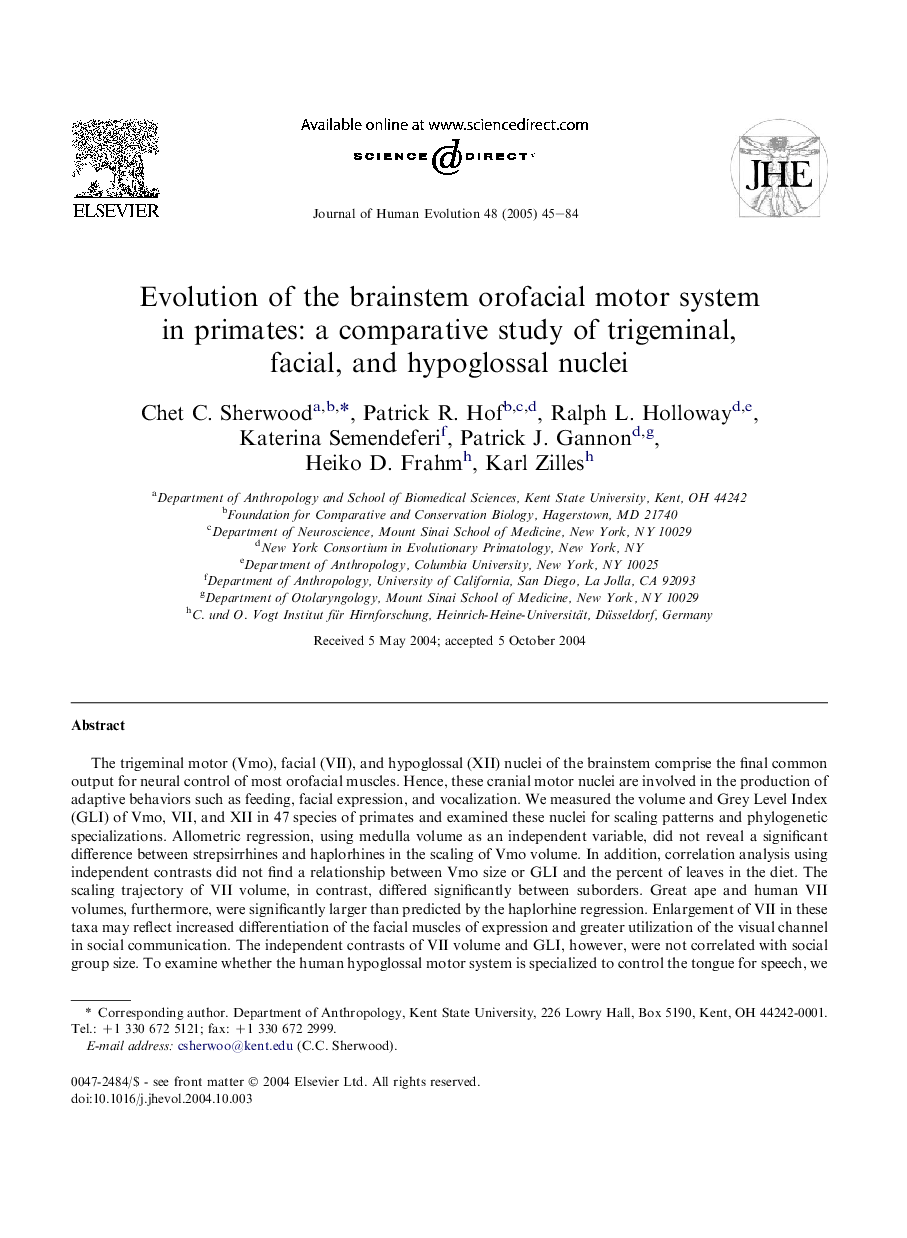| کد مقاله | کد نشریه | سال انتشار | مقاله انگلیسی | نسخه تمام متن |
|---|---|---|---|---|
| 9485970 | 1329557 | 2005 | 40 صفحه PDF | دانلود رایگان |
عنوان انگلیسی مقاله ISI
Evolution of the brainstem orofacial motor system in primates: a comparative study of trigeminal, facial, and hypoglossal nuclei
دانلود مقاله + سفارش ترجمه
دانلود مقاله ISI انگلیسی
رایگان برای ایرانیان
کلمات کلیدی
موضوعات مرتبط
علوم زیستی و بیوفناوری
علوم کشاورزی و بیولوژیک
بوم شناسی، تکامل، رفتار و سامانه شناسی
پیش نمایش صفحه اول مقاله

چکیده انگلیسی
The trigeminal motor (Vmo), facial (VII), and hypoglossal (XII) nuclei of the brainstem comprise the final common output for neural control of most orofacial muscles. Hence, these cranial motor nuclei are involved in the production of adaptive behaviors such as feeding, facial expression, and vocalization. We measured the volume and Grey Level Index (GLI) of Vmo, VII, and XII in 47 species of primates and examined these nuclei for scaling patterns and phylogenetic specializations. Allometric regression, using medulla volume as an independent variable, did not reveal a significant difference between strepsirrhines and haplorhines in the scaling of Vmo volume. In addition, correlation analysis using independent contrasts did not find a relationship between Vmo size or GLI and the percent of leaves in the diet. The scaling trajectory of VII volume, in contrast, differed significantly between suborders. Great ape and human VII volumes, furthermore, were significantly larger than predicted by the haplorhine regression. Enlargement of VII in these taxa may reflect increased differentiation of the facial muscles of expression and greater utilization of the visual channel in social communication. The independent contrasts of VII volume and GLI, however, were not correlated with social group size. To examine whether the human hypoglossal motor system is specialized to control the tongue for speech, we tested human XII volume and GLI for departures from nonhuman haplorhine prediction lines. Although human XII volumes were observed above the regression line, they did not exceed prediction intervals. Of note, orang-utan XII volumes had greater residuals than humans. Human XII GLI values also did not differ from allometric prediction. In sum, these findings indicate that the cranial orofacial motor nuclei evince a mosaic of phylogenetic specializations for innervation of the facial muscles of expression in the context of a generally conservative scaling relationship with respect to medulla size.
ناشر
Database: Elsevier - ScienceDirect (ساینس دایرکت)
Journal: Journal of Human Evolution - Volume 48, Issue 1, January 2005, Pages 45-84
Journal: Journal of Human Evolution - Volume 48, Issue 1, January 2005, Pages 45-84
نویسندگان
Chet C. Sherwood, Patrick R. Hof, Ralph L. Holloway, Katerina Semendeferi, Patrick J. Gannon, Heiko D. Frahm, Karl Zilles,